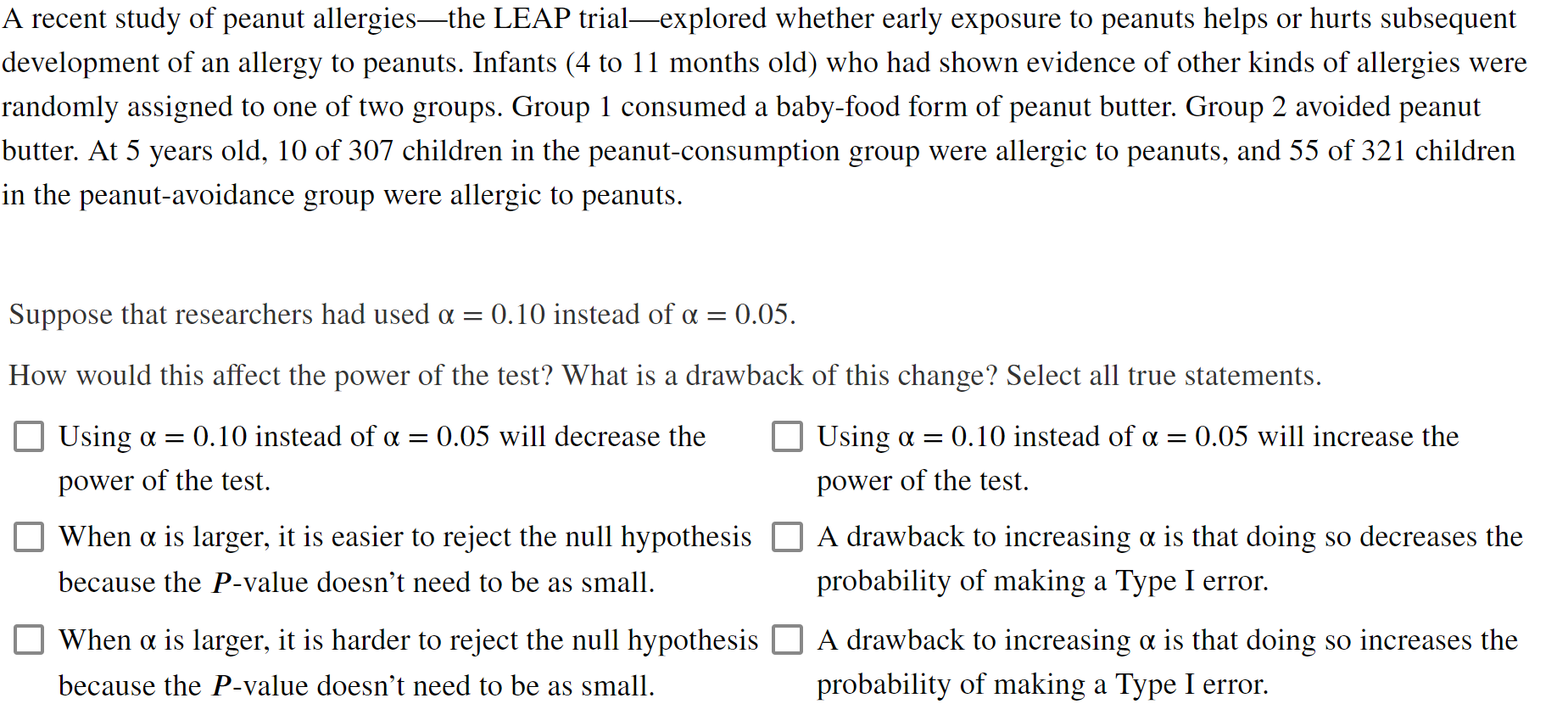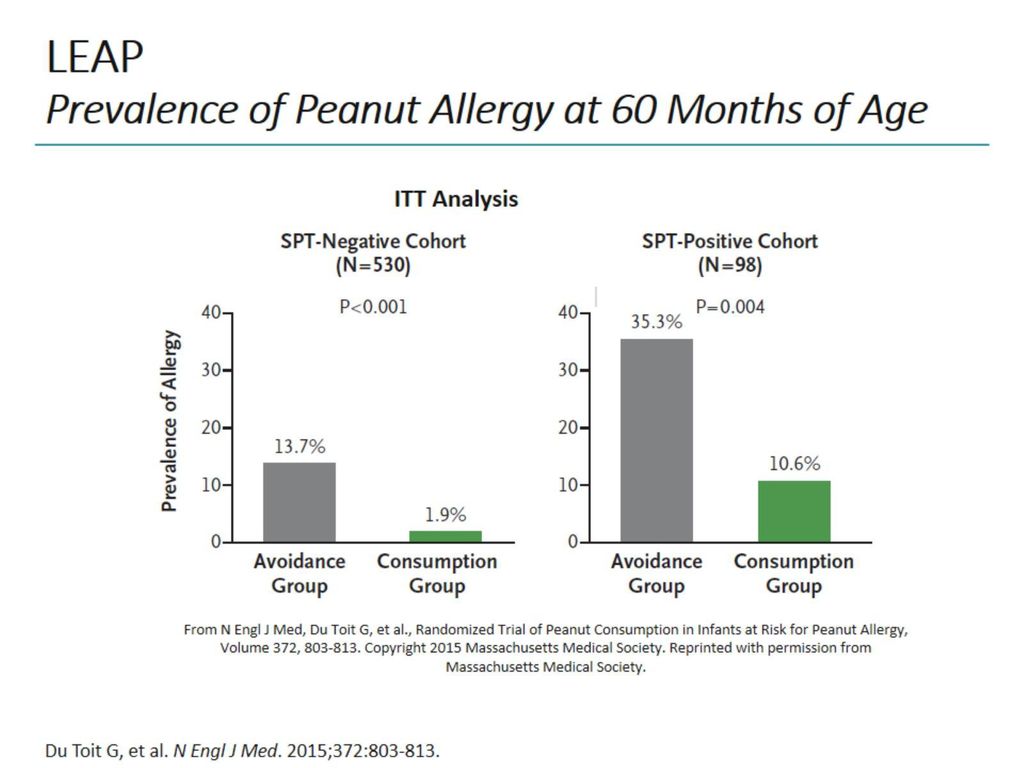A Recent Study Of Peanut Allergies The Leap Trial - In this study, risk subgroups were determined among infants from the leap trial based on the probability of developing peanut allergy and the. Researchers found that early introduction of peanut reduced the risk of peanut allergy at age 5 by 81%. During the leap trial, half of the participants regularly consumed peanut products from infancy until age 5 years, while the other.
In this study, risk subgroups were determined among infants from the leap trial based on the probability of developing peanut allergy and the. Researchers found that early introduction of peanut reduced the risk of peanut allergy at age 5 by 81%. During the leap trial, half of the participants regularly consumed peanut products from infancy until age 5 years, while the other.
Researchers found that early introduction of peanut reduced the risk of peanut allergy at age 5 by 81%. During the leap trial, half of the participants regularly consumed peanut products from infancy until age 5 years, while the other. In this study, risk subgroups were determined among infants from the leap trial based on the probability of developing peanut allergy and the.
A mouse model of the LEAP study reveals a role for CTLA4 in preventing
Researchers found that early introduction of peanut reduced the risk of peanut allergy at age 5 by 81%. During the leap trial, half of the participants regularly consumed peanut products from infancy until age 5 years, while the other. In this study, risk subgroups were determined among infants from the leap trial based on the probability of developing peanut allergy.
Identifying infants at high risk of peanut allergy The Learning Early
During the leap trial, half of the participants regularly consumed peanut products from infancy until age 5 years, while the other. In this study, risk subgroups were determined among infants from the leap trial based on the probability of developing peanut allergy and the. Researchers found that early introduction of peanut reduced the risk of peanut allergy at age 5.
(PDF) Urgent information on peanut allergy New evidence from the LEAP
In this study, risk subgroups were determined among infants from the leap trial based on the probability of developing peanut allergy and the. During the leap trial, half of the participants regularly consumed peanut products from infancy until age 5 years, while the other. Researchers found that early introduction of peanut reduced the risk of peanut allergy at age 5.
Solved 23. Preventing peanut allergies A recent study of
In this study, risk subgroups were determined among infants from the leap trial based on the probability of developing peanut allergy and the. Researchers found that early introduction of peanut reduced the risk of peanut allergy at age 5 by 81%. During the leap trial, half of the participants regularly consumed peanut products from infancy until age 5 years, while.
Journal Club Eman AlSelmie, MD 5/27/ ppt download
Researchers found that early introduction of peanut reduced the risk of peanut allergy at age 5 by 81%. In this study, risk subgroups were determined among infants from the leap trial based on the probability of developing peanut allergy and the. During the leap trial, half of the participants regularly consumed peanut products from infancy until age 5 years, while.
Randomized Trial of Peanut Consumption in Infants at Risk for Peanut
During the leap trial, half of the participants regularly consumed peanut products from infancy until age 5 years, while the other. Researchers found that early introduction of peanut reduced the risk of peanut allergy at age 5 by 81%. In this study, risk subgroups were determined among infants from the leap trial based on the probability of developing peanut allergy.
Advances in Peanut Allergy ppt download
During the leap trial, half of the participants regularly consumed peanut products from infancy until age 5 years, while the other. In this study, risk subgroups were determined among infants from the leap trial based on the probability of developing peanut allergy and the. Researchers found that early introduction of peanut reduced the risk of peanut allergy at age 5.
Solved 3) A recent study of peanut allergies the LEAP
In this study, risk subgroups were determined among infants from the leap trial based on the probability of developing peanut allergy and the. During the leap trial, half of the participants regularly consumed peanut products from infancy until age 5 years, while the other. Researchers found that early introduction of peanut reduced the risk of peanut allergy at age 5.
Solved A recent study of peanut allergies—the LEAP
Researchers found that early introduction of peanut reduced the risk of peanut allergy at age 5 by 81%. During the leap trial, half of the participants regularly consumed peanut products from infancy until age 5 years, while the other. In this study, risk subgroups were determined among infants from the leap trial based on the probability of developing peanut allergy.
Advances in Peanut Allergy ppt download
In this study, risk subgroups were determined among infants from the leap trial based on the probability of developing peanut allergy and the. During the leap trial, half of the participants regularly consumed peanut products from infancy until age 5 years, while the other. Researchers found that early introduction of peanut reduced the risk of peanut allergy at age 5.
During The Leap Trial, Half Of The Participants Regularly Consumed Peanut Products From Infancy Until Age 5 Years, While The Other.
Researchers found that early introduction of peanut reduced the risk of peanut allergy at age 5 by 81%. In this study, risk subgroups were determined among infants from the leap trial based on the probability of developing peanut allergy and the.




.jpg)




